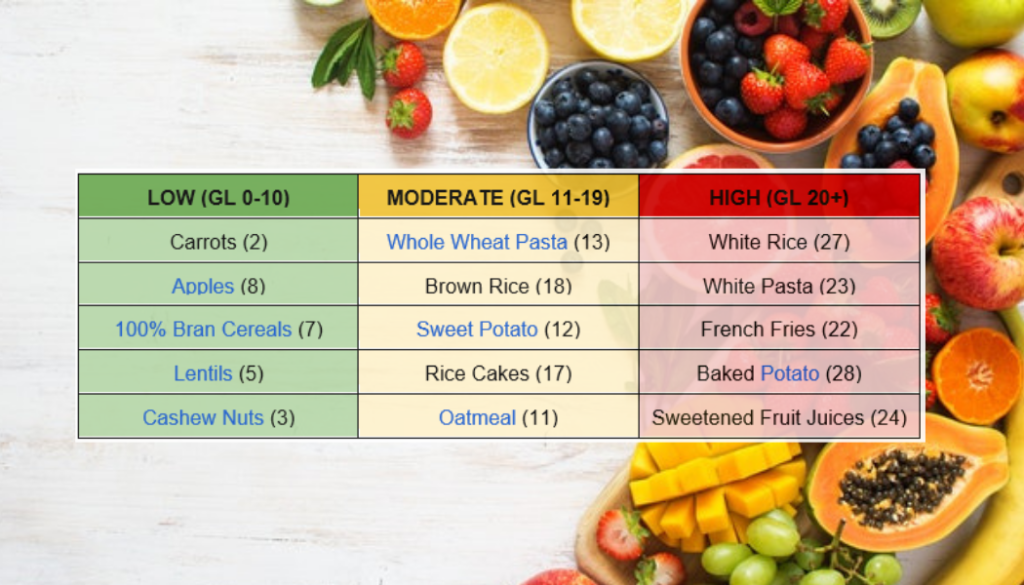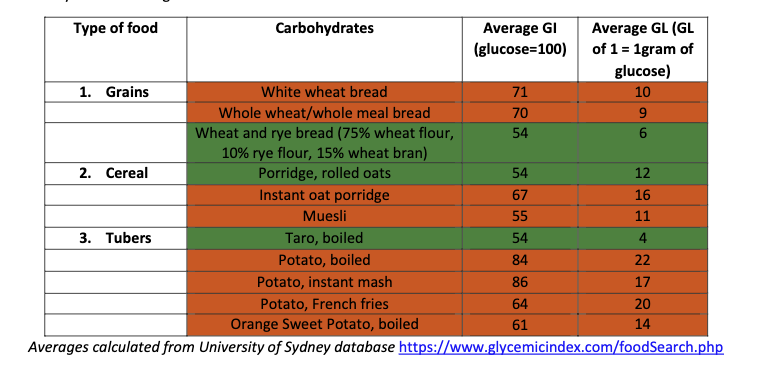THE CARIBBEAN DIET: Rethinking glycaemic index
Not all vegetables are created equal. Not all vegetables are created equal. There, I said it! Potatoes and cassava simply do not do the same things to our bodies. Lockdown has invited many of us to slow down and focus
on the essential, causing a lot of us to redefine cooking as a top priority.
This may have intrigued some to question what exactly makes the true difference between a healthy and unhealthy diet.
In this series of articles, we will look at why the Caribbean diet promotes vitality and health. To illustrate these ideas, I will share recipes along the way, which will give you new inspiration for a varied and balanced diet. In this first article, I focus on the benefits of low GI starches, which are a key element of the Caribbean Diet.

What is GI?
GI stands for the glycaemic index, a measurement of the time foods take to cause a raise in blood sugar following their consumption. You may wonder why to use such a measurement. It turns out, how sweet food tastes can not tell us everything about the effect it will have on our blood sugar and overall health. GI provides a numerical scale to blood sugar levels, with 100 being pure glucose; low GI (LGI), commonly classified as 55or below, and high GI (HGI) at70 or above. As a result, the GI index helps us make more discerning food choices. This is important as fast blood sugar spikes have a negative short-term effect on energy levels and, if high GI food consumption is sustained over a long period of time, long-term health issues such as diabetes, obesity, and even Alzheimer’s Disease often follow.
https://www.healthyandnaturalworld.com/how-to-reduce-your-glycemic-index-and-lose-weight/
How to read your metabolic health
Elevated blood insulin is an early sign of Type 2 diabetes and is an excellent stage for medical and nutritional intervention, however, prevention is always better than the cure. To prevent elevated blood sugar and insulin levels, GI and Glycaemic Load are useful tools to help you build a healthy diet and prevent inflammation-a trademark of diabetes and Alzheimer’s. Whilst the glycaemic index tells us how likely one food item is to raise blood sugar; the glycaemic load tells you how much an entire meal will raise a person’s blood sugar overall. Cutting-edge neuroscience reveals that blood sugar and insulin levels have a significant bearing on hippocampal function. Chronic high blood sugar elevates insulin levels in the body and brain, the hippocampi are highly dependent on insulin to function, however, when insulin levels in the brain are elevated, the hippocampi, and other regions, become insulin resistant hormones work by negative feedback when insulin is high, the hippocampi become starved of insulin, causing a sort of insulin resistance of the brain, hence why Suzanne de la Monte has coined the term “Type 3 Diabetes” to describe Alzheimer’s.
https://pubmed.NCBI.nlm.nih.gov/19885299/
How to eat to support good metabolic health
So, at this point, I hope you feel equipped to categorize food and improve your blood sugar levels. You may now be wondering what you can do about all this today to lower your diabetes and Alzheimer’s risk right now. It may be obvious that a typical chocolate cake or ice cream would have a high GI and GL, in fact, the first step is to eliminate processed and refined carbohydrates such as packaged pastries and white bread, sugar, breakfast cereals, and fried food, this will already cut down your levels of inflammation drastically. However, what may not be so obvious is the difference between high GI tubers and low GI tubers or white and brown pasta.
The golden rule to lowering the GL of your diet is to make sure that the carbohydrates you consume are complex and high in fibre. In fact, someone first starting to improve their diet might still struggle with cravings for simple carbs, to avoid simple cereals or toast, eat a fibrous apple first thing in the morning.Follow this up with some rye bread or rye crackers and avocado for some low GI fuel.I have listed some other food swaps below that could help you choose nutritious, high fibre carbs over processed, low fibre carbs and if you want to introduce something new into your diet, you can also refer to its glycaemic index; my list below should help you get started: low GI carbohydrates are highlighted in green and high GI carbohydrates in orange.



